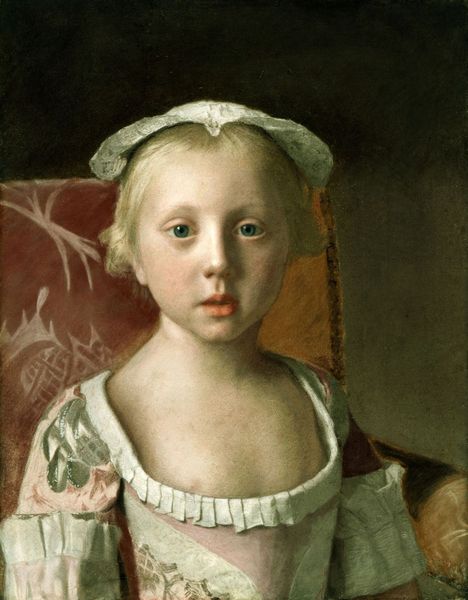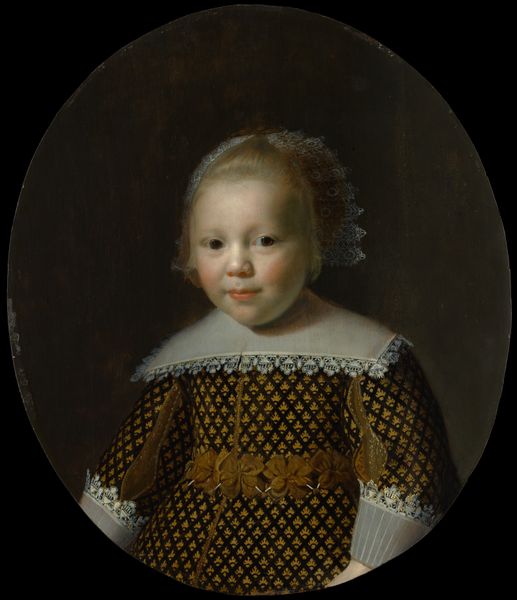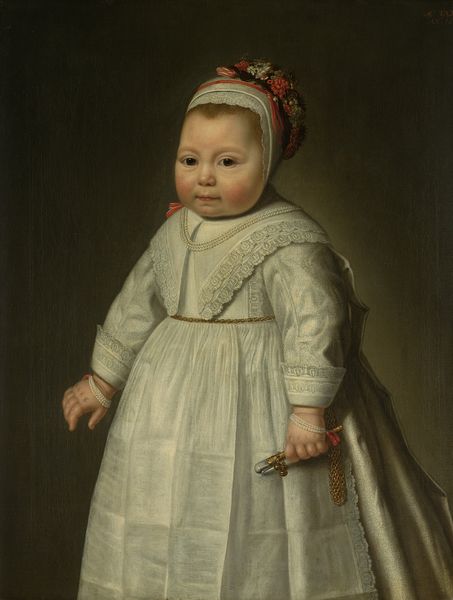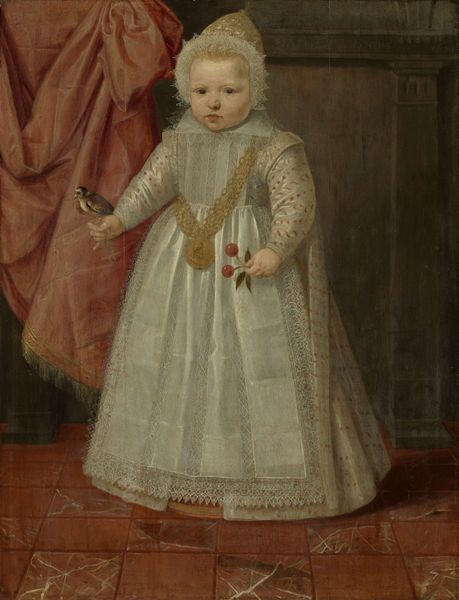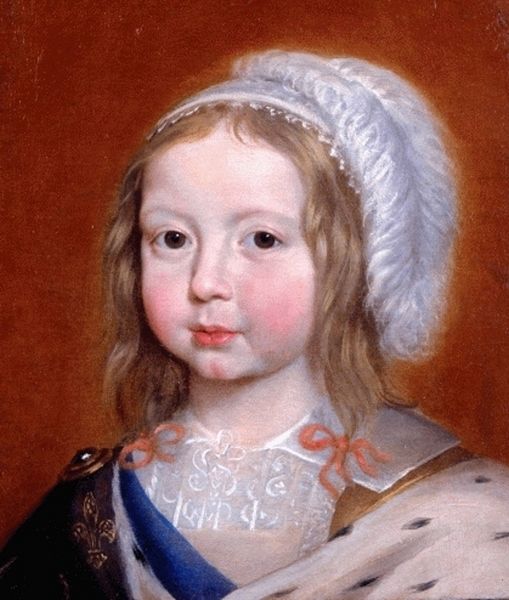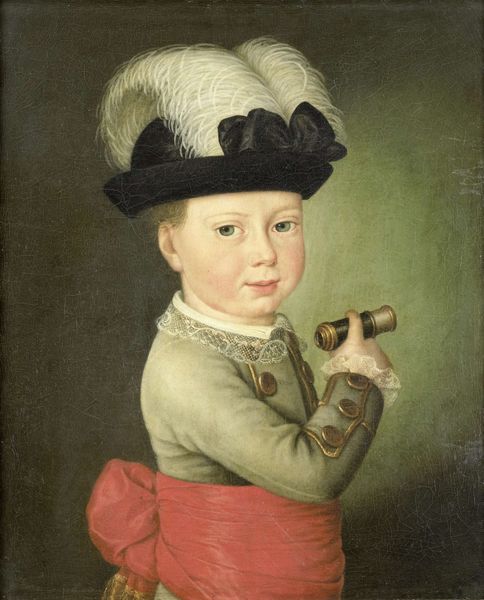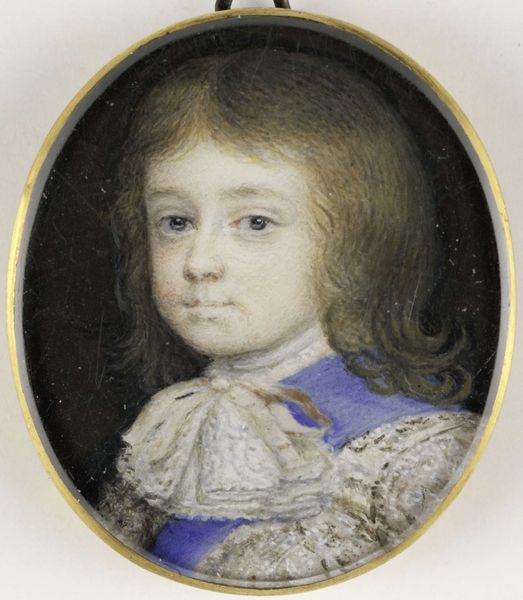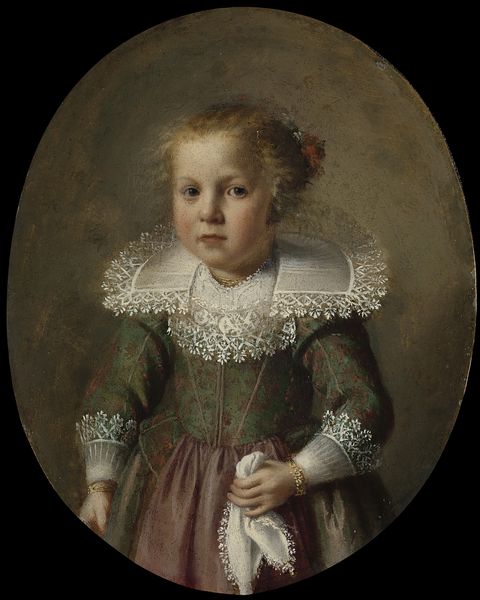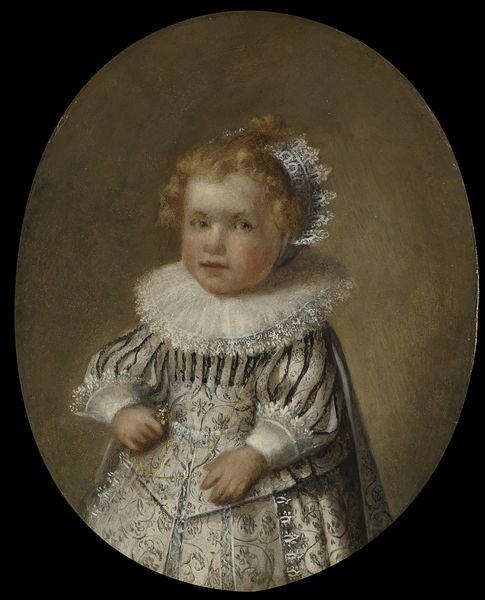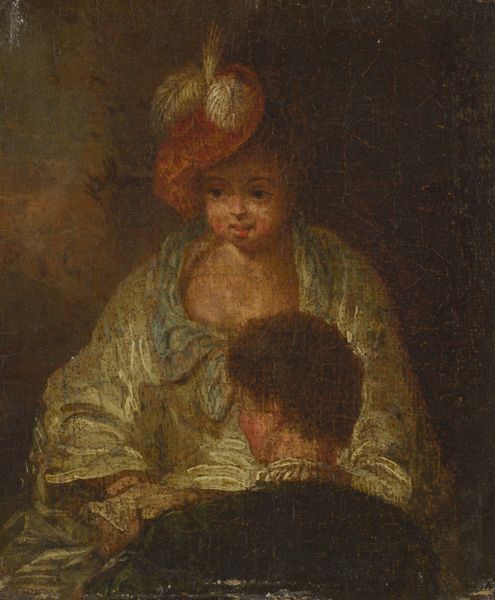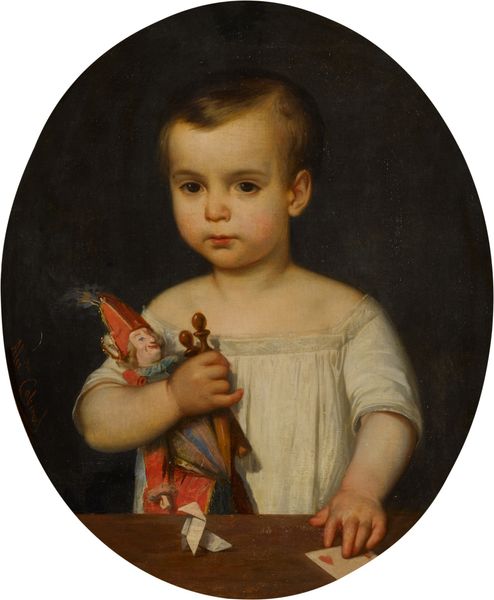
painting, oil-paint, canvas
#
portrait
#
painting
#
oil-paint
#
oil painting
#
canvas
#
portrait art
#
rococo
Dimensions: 38.3 cm (height) x 31 cm (width) (Netto)
Curator: This is Johan Hörner's "Portrait of Carl Christian Laurentius Birch," a rococo painting made with oil on canvas between 1754 and 1757. It's part of the collection at the SMK, the Statens Museum for Kunst. Editor: My first thought is "precocious." There's something very intentional in this child's gaze, an awareness beyond his years that’s almost unsettling. Curator: Absolutely. Portraits of children during this era often conveyed messages about family lineage, wealth, and the child's potential future role. Look at the hat—it's not simply a child's accessory, but rather a symbolic gesture of societal status, signaling belonging and privilege. And notice how the white feather emphasizes the child's fair complexion, conforming to a European standard of beauty. Editor: True, though to me it’s still strange seeing children so explicitly positioned within hierarchies of power. The elaborate details seem less about celebrating innocence and more about showcasing societal expectation. Was childhood considered a distinct phase of development back then, or were children seen as miniature adults? Curator: In the mid-18th century, the concept of childhood was evolving. While children from privileged backgrounds, like Carl Christian Laurentius Birch, began to be seen as requiring specific forms of care and education, this understanding was limited. The inclusion of finery such as the red bow at the side of the black hat along with the frilled lace collar indicates the subject was groomed for privilege. Editor: I wonder how Carl himself would feel, seeing this portrait today. As someone aware of the constructs around gender, race, and class, does he resent how he was styled to adhere to strict standards of class and beauty? The past always looks different under the light of present knowledge. Curator: Perhaps. But to understand the full impact, we must also examine our present expectations. Art always holds layers of cultural meaning—how we decode them tells a story of not only what happened but also how we interpret the values it represents. The light reflecting off the pink ribbon evokes the hope his family vested in the young Birch and their desire for prosperity and generational power. Editor: It’s this very tension that makes it so fascinating—the negotiation between what it meant then and what we read into it now. It prompts crucial discussions about representation and agency across different times. Curator: Precisely. Images hold immense power—they echo through generations, shifting meaning. I walk away pondering what it is to project ideals onto our future, then witness those projections centuries later. Editor: Yes, it's the portrait’s dual nature: a reflection of its own time while holding up a mirror to our current understanding, making this seemingly straightforward painting quite potent, especially given its apparent delicacy.
Comments
No comments
Be the first to comment and join the conversation on the ultimate creative platform.
